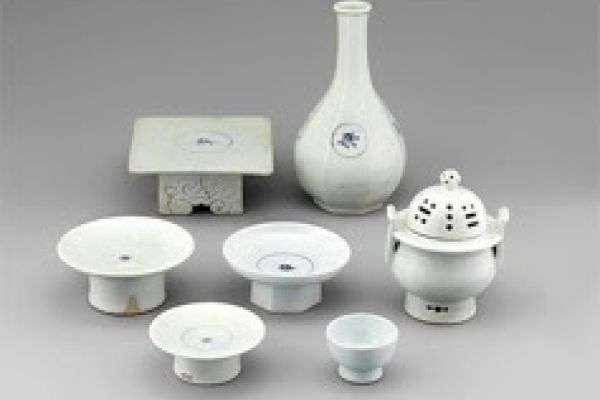
- This event has passed.

Enjoy a morning exploring the role that ceramics have played in the ceremonial life of various Asian societies, whether in religious or court context. Our three expert speakers will cover a wide range of topics, with opportunity for discussion. Members are encouraged to bring in relevant ceramic objects from their own collection to share with others.
Jackie Menzies, Emeritus Curator of Asian Art, Art Gallery of NSW
Korean ritual porcelain: an aesthetic of purity and grace
A distinctive group of porcelain vessels, restrained in form and covered with smooth, white glaze, was developed during the Joseon dynasty (1392-1910) to cater for the tastes of a new society which sought to see its Neo-Confucian values of frugality and understated simplicity embodied in the arts. Rituals for the state and ancestors played an important role in this new society. The preference for white porcelain was inspired not only by the new cultural tastes of the Joseon elite but also by the porcelains produced at the venerated Jingdezhen kilns in China. This talk will trace the development and purpose of white wares through the Joseon dynasty, while showing the inspiration this great tradition has provided contemporary Korean potters.
Wendy Parker, Designer and lecturer, College of Fine Arts, UNSW
Ritual Vessels in Bali: Entertaining the gods and telling tales through temple offerings, dance and sacred heirlooms
Ritual objects associated with Balinese temple festivals are assembled using a range of materials, constructed to represent oral traditions. Many are transient, perishing at the end of the festival. Others are of a permanent nature made of metal or clay and stored as pusaka or heirloom objects for later use. The narratives associated with these objects have both devotional and story-telling functions, employed in temple rituals to entertain the gods and inform the members of the community.
Ann Proctor, Art historian with a particular interest in Vietnam
Politics and War: The aesthetics of the Nguyá»…n Dynasty Court, 1802-1945
The cultural importance of the Nguyen Dynasty of Vietnam has recently been re-evaluated and re-integrated into the nation’s history. The court followed a Neo-Confucian model and specific objects were produced for its use by a system of handicraft units, where the most talented in their field were employed. A range of objects including ceramics, bronzes, gold, and jades were ordered. It is astonishing that anything of value survived this tumultuous period of colonialism, Marxism and the American- Vietnam war, nevertheless those pieces that do so enable us to enjoy and explore the motifs and aesthetics adopted by royal taste makers of the last Vietnamese Dynasty.
Refreshments provided.
RSVP: Margaret White at:Margaret.artmoves@gmail.com.
Payment:
1. Cash at door
2. Via this website – see booking button top right.
3. By EFT to TAASA’s account:
BSB: 012003, Account No: 218528414 (please indicate ‘your name CSG’)